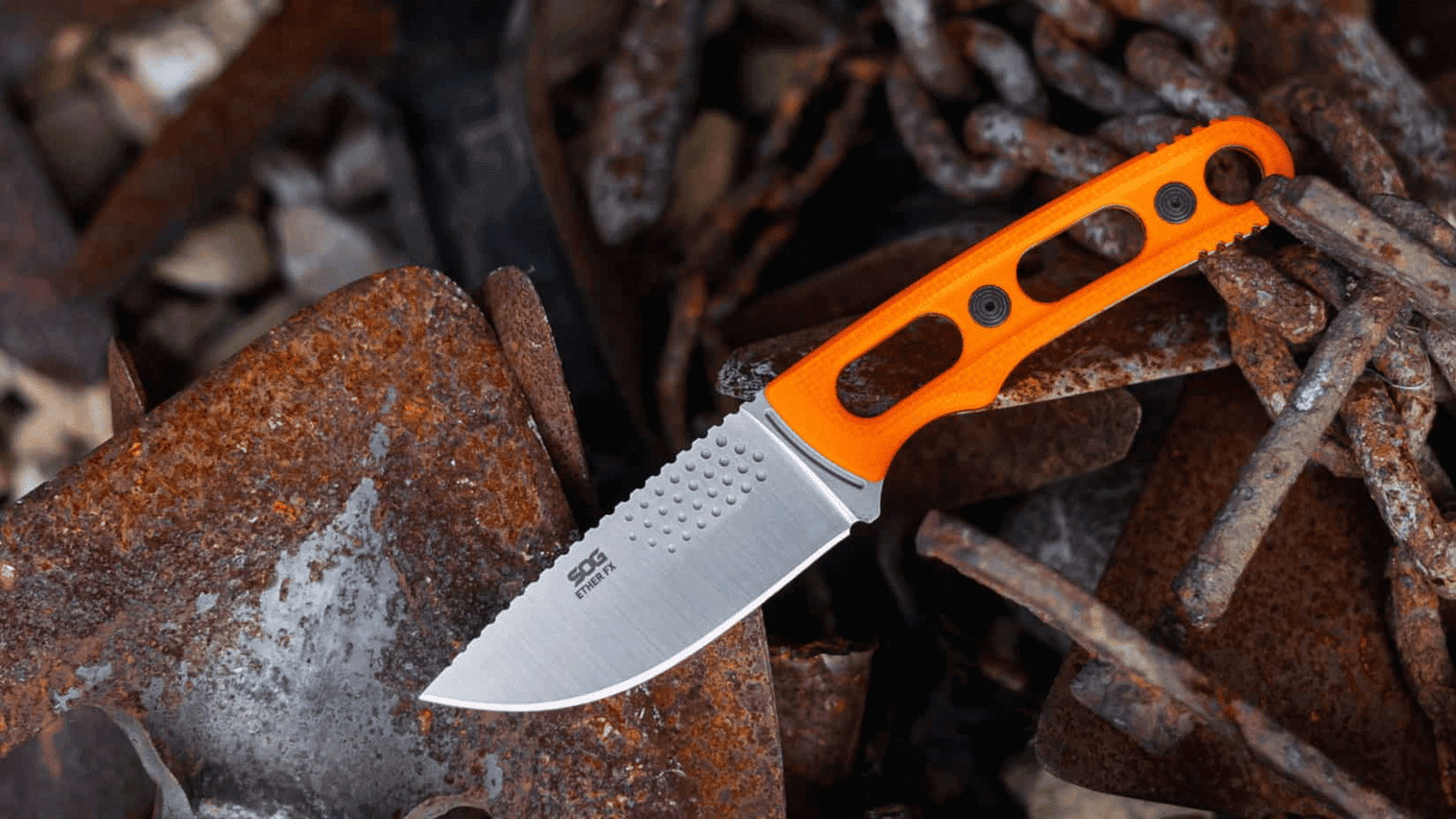
Introduction
The Versatile Serrated Pocket Knife
A pocket knife is a handy tool, but when it comes with a serrated edge, it becomes even more versatile. Serrated pocket knives have teeth-like edges that can handle various tasks with ease. In this article, we’ll explore the 10 best uses for serrated pocket knives, highlighting their practicality in everyday life.
Serrated Pocket Knife Basics
Serrated vs. Plain Edge
Before we dive into their uses, let’s understand the basics. Serrated edges have small, jagged teeth, while plain edges are smooth. Serrated knives excel at certain tasks due to their unique design.
Anatomy of a Serrated Knife
A serrated pocket knife typically has a pointed blade with serrations near the base. These serrations resemble tiny saw teeth, making them excellent for cutting tough materials.
Benefits of Serrated Edges
Serrated edges offer increased cutting power, making them ideal for various applications. Now, let’s explore the top 10 uses for these versatile tools.

1. Cutting Ropes and Cords
A serrated knife’s Cutting Power
When you need to cut ropes, cords, or even seatbelts in emergency situations, a serrated pocket knife is your best friend. The serrations grip and cut through these materials quickly.
Outdoor Applications
Whether you’re camping, hiking, or boating, a serrated knife can handle the tough tasks, from setting up camp to securing your gear.
Emergency Situations
In emergencies, like car accidents, a serrated knife can swiftly cut seatbelts, helping you and others escape from danger.
2. Slicing Bread and Cakes
Serrated Knife’s Precision
In the kitchen, a serrated pocket knife is your secret weapon for slicing bread and cakes with precision. The serrations grip the crust and ensure clean, even slices.
Kitchen Tool
It’s a staple tool for any home cook or baker, making breakfast toast or preparing desserts a breeze.
Picnic Essential
When you’re enjoying a picnic, bring along a serrated knife for easy sandwich and cake cutting—no need to struggle with squished sandwiches.
3. Sawing through Tough Materials
Serrated Blade’s Sawing Action
Need to saw through tough materials like plastic or wood during DIY projects? A serrated knife’s sawing action makes the job easier.
DIY Projects
Whether you’re building furniture or crafting, a serrated pocket knife can help you make precise cuts.
Camping Necessity
When camping, a serrated knife is invaluable for cutting branches, ropes, or even fish you catch in the wild.
4. Serrations for Fibrous Vegetables
Serrated Knives in Cooking
In the kitchen, serrated knives shine when it comes to slicing fibrous vegetables like tomatoes and bell peppers.
Tomato Slicing
Say goodbye to squashed tomatoes. A serrated knife effortlessly slices through them, maintaining their shape and juiciness.
Salad Prep
Preparing salads becomes a breeze with a serrated knife, as it glides through lettuce and cabbage without wilting them.

5. Cutting Plastic and Packaging
Serrated Edge’s Efficiency
When dealing with stubborn plastic packaging, a serrated knife’s efficiency in opening boxes and cutting through sealed plastic saves time and frustration.
Opening Boxes
No more struggling to open packages; a serrated knife’s sharp teeth make quick work of cardboard and plastic.
Reducing Plastic Waste
Using a serrated knife to open packages reduces the need for scissors or disposable cutting tools, contributing to less plastic waste.
6. Trimming Plants and Branches
Garden Tool
Gardeners love serrated pocket knives for trimming plants and branches, ensuring clean cuts for healthy growth.
Pruning Shrubs
Serrated knives are perfect for pruning shrubs, allowing you to shape your garden with precision.
Outdoor Adventure
Whether you’re on a hike or a camping trip, a serrated knife can help you clear paths and cut branches for various purposes.
7. Scaling Fish
Serrated Blade’s Grip
When you’re fishing, a serrated pocket knife’s grip on fish scales makes scaling and cleaning your catch easier.
Fishing Trips
Pack a serrated knife on your fishing trips for convenient fish preparation by the water.
Seafood Preparation
At home, a serrated knife is also useful for cutting and filleting various seafood.
8. Emergency Seatbelt Cutting
Serrated Knife’s Rescue Role
In emergency situations, such as car accidents, a serrated knife can be a lifesaver. It swiftly cuts through seatbelts, allowing for a quick escape.
Car Safety Tool
Consider keeping a serrated pocket knife in your car’s emergency kit for added safety.
First Responders
First responders often use serrated knives as part of their rescue equipment to assist in extracting people from vehicles.
9. Crafting and Hobby Projects
Precision Cutting
Crafters and hobbyists appreciate serrated knives for precision cutting of materials like paper, cardboard, and foam.
Model Building
When building models or miniature structures, a serrated knife ensures clean edges and intricate details.
Artistic Creations
Artists can use serrated knives to create textured effects in their artwork, adding depth and dimension.
10. Sharpening Other Blades
Serrated Knife’s Dual Functionality
Surprisingly, a serrated pocket knife can be used to sharpen other blades, extending the lifespan of your tools.
Knife Maintenance
Regular maintenance of your kitchen and outdoor knives becomes easier with the dual functionality of a serrated knife.
Extended Tool Lifespan
By using your serrated knife to maintain the sharpness of other blades, you prolong their usability and save money on replacements.
Serrated Knife Maintenance
Cleaning and Drying
To ensure your serrated knife serves you well, clean and dry it thoroughly after each use to prevent corrosion.
Sharpening Serrations
Maintain the serrations with a specialized sharpener or a sharpening rod designed for serrated blades.
Ensuring Longevity
With proper maintenance, your serrated pocket knife can last for years, continuing to serve you effectively.
Safety Tips with Serrated Knives
Proper Handling
Always handle serrated knives with care, using them for their intended purposes and keeping them out of the reach of children.
Knife Storage
Store your serrated knife safely, either in a knife block or a sheath, to protect both the blade and yourself.
Childproofing
If you have children at home, consider childproofing your kitchen to prevent access to sharp knives.
Choosing the Right Serrated Knife
Blade Length
Select a serrated knife with an appropriate blade length for your intended tasks, ensuring it fits comfortably in your hand.
Handle Material
Consider the handle material for grip and comfort during use. Options range from wood to plastic and metal.
Brand Considerations
Reputable knife brands often offer quality serrated pocket knives with a history of durability and performance.
Conclusion
The Swiss Army Knife of Blades
In conclusion, a serrated pocket knife is like the Swiss Army Knife of blades, ready to tackle a wide range of tasks. From kitchen prep to outdoor adventures, these versatile tools prove invaluable in everyday life. Understanding their uses and proper maintenance ensures they remain reliable companions for years to come.
FAQs: Serrated Pocket Knife Uses
How often should I sharpen the serrations on my pocket knife?
The frequency of sharpening serrations depends on usage. In general, sharpen them when you notice decreased cutting efficiency. Use a specialized serration sharpener or rod to maintain their effectiveness.
Can serrated knives be taken on airplanes?
No, serrated knives are typically not allowed in carry-on luggage on airplanes. They are considered potential security risks. Check with the airline’s specific policies, but it’s safer to pack serrated knives in checked baggage.
Are there serrated knives suitable for left-handed individuals?
Yes, many manufacturers offer serrated knives with ambidextrous designs or specific left-handed models. These knives have handles and serrations optimized for left-handed users’ comfort and convenience.
Are serrated knives more challenging to maintain than plain-edge knives?
Serrated knives require different maintenance techniques than plain-edge knives. While they may seem more challenging to sharpen due to their serrations, specialized sharpening tools make the process easier. Regular maintenance ensures they remain effective.





